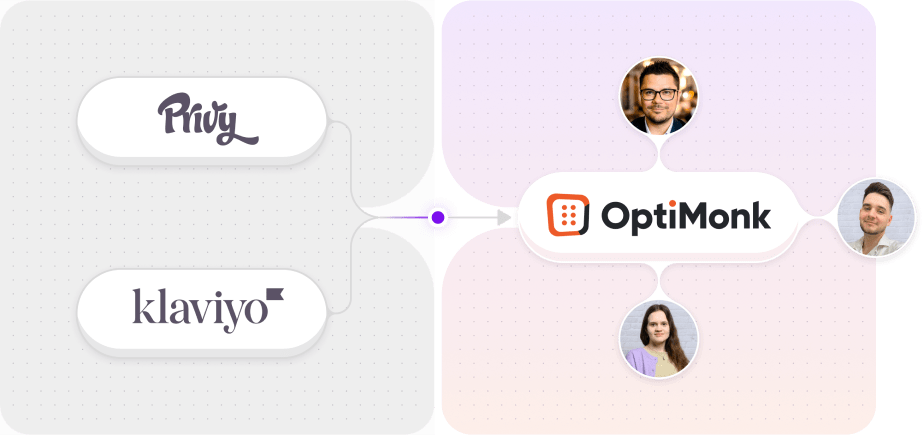- Blog
- The Ultimate Guide to Behavioral Marketing in 2025
The Ultimate Guide to Behavioral Marketing in 2025
-
Nikolett Lorincz
- Marketing
- 6 min read
Table of Contents
Ever feel like your marketing efforts are missing the mark? You’ve got the data, the ad spend, and a solid product, but your audience still isn’t converting the way you want.
Sound familiar? That’s where behavioral marketing comes in.
It’s not just about blasting ads or sending random emails—it’s about understanding why your customers do what they do, and using that insight to create marketing that actually resonates.
In this article, we’ll break down how you can use behavioral marketing to truly connect with your audience and drive better results.
Let’s dive in!
What is behavioral marketing?
Behavioral marketing is all about using data from users’ actions to tailor ads and marketing messages.
Instead of bombarding everyone with the same generic message, behavioral marketing analyzes how people interact with your website, emails, and ads (including search history). These interactions—or behaviors—are tracked, and based on that, users are segmented into different groups.
Think of it as the opposite of traditional marketing, where everyone gets the same sales pitch. Behavioral marketing personalizes those messages so users only see content that’s relevant to them.
Whether they’re searching for a new product, comparing prices, or abandoning a cart, their actions dictate the marketing they’ll experience.
How does behavioral marketing work?
Behind the scenes, behavioral marketing is powered by data. Here’s how it works step by step:
- Data collection: This is where the magic begins. Through cookies, browser history, clicks, and consumer behavior data, businesses gather information about users. They track everything from which pages users visit to how long they stay and what they click on.
- Segmentation: After collecting the data, users are grouped into different segments based on their behavior. For example, users who abandon carts may be grouped together, while frequent shoppers form another segment. This allows marketers to create highly targeted campaigns for each group.
- Personalization: Now comes the fun part. Marketers use this segmentation to send personalized messages—whether it’s a special offer to nudge an abandoned cart back to the checkout or a product recommendation for loyal customers. The goal is to be as relevant as possible.
- Automated actions: Thanks to automation tools, you don’t have to manually send these personalized messages. You set up triggers and workflows so that specific actions automatically send the right message to the right person at the right time.
Types of behavioral marketing
Behavioral marketing isn’t a one-size-fits-all approach. There are various types you can use depending on your business goals.
Let’s break down the most common ones!
1. Retargeting ads
Ever notice that after visiting a site, you start seeing its ads everywhere? That’s retargeting. It uses your browsing behavior to remind you about products you’ve shown interest in.
2. Email campaigns
Behavioral email marketing is a game-changer. Based on a user’s behavior, you can send personalized emails. For example, someone who downloads a free ebook might get a follow-up email offering a related product.
3. Product recommendations
You’ve seen these in action on platforms like Amazon. Behavioral marketing tracks what users view, purchase, and search for to suggest relevant products.
4. Geotargeting
This type of behavioral marketing targets users based on their location. It’s often used in mobile marketing to offer nearby deals or location-specific content.
5. On-site targeting
This includes personalized experiences based on what visitors do on your website. For instance, first-time visitors might get an introductory discount, while return visitors see product recommendations based on previous purchases.
How to build a behavioral marketing strategy?
Now that you understand what behavioral marketing is and how it works, it’s time to create your own strategy. This might seem overwhelming at first, but breaking it down into clear steps will help you approach it with confidence.
Here’s a step-by-step guide to get you started with behavioral marketing strategies.
1. Define your goals
Before anything else, you need to know what you want to achieve. Without clear goals, even the best data won’t take you far.
Are you trying to increase conversion rates? Reduce cart abandonment? Drive more returning customers? Maybe you want to enhance customer loyalty or increase the average order value.
Whatever your objective, make sure it’s measurable. For example, instead of saying, “I want more sales,” frame your goal as, “I want to increase conversions by 20% in the next three months.”
Having concrete goals helps you stay focused and makes it easier to assess your progress.
2. Identify key behaviors
Next, determine which user behavior you’re going to track. This step is crucial because it’s the foundation of your entire behavioral marketing strategy.
Depending on your goals, you may focus on actions like:
- Browsing history: What pages are users visiting? How much time do they spend on specific product pages?
- Purchasing behavior: Are they repeat buyers? Do they make frequent small purchases or occasional large ones?
- Engagement levels: Are users opening your emails? Clicking on your ads? Abandoning carts after adding products? Are they interacting with your content on social media platforms?
The behavioral patterns you track will depend on your goals, but the key is to focus on actions that give you insight into where customers are in their buying journey. This allows you to tailor your messaging effectively.
3. Segment your audience
Once you’ve gathered behavioral data, it’s time for audience segmentation. But don’t just stop at broad categories like “new site visitors” or “returning customers.” The more detailed your behavioral segmentation, the better your results will be.
Here are some ways to get specific:
- Purchase frequency: Are you dealing with first-time buyers, repeat customers, or high-value customers?
- Product interest: What types of products do different users seem to prefer based on their browsing and purchasing history?
- Engagement level: Have they clicked on emails or added items to their cart but not completed a purchase?
For example, you could create segments like “high-spending loyal customers,” “cart abandoners who clicked on an email but didn’t buy,” or “frequent browsers who haven’t made a purchase yet.” These insights allow you to tailor your marketing messages and offers to specific behaviors.
4. Create personalized campaigns
Now comes the fun part—creating personalized marketing campaigns based on the segments you’ve defined. The goal is to ensure that each customer segment receives tailored messages.
For example, you can display a welcome popup to new site visitors, offering a discount to encourage a first purchase.
Or you can nudge cart abandoners with an exit-intent popup, reminding them of the items they left behind, possibly with a special offer.
You can also show loyal customers personalized product recommendations based on their purchase history.
Personalization is about delivering content, offers, and experiences that align with where they are in their customer journey.
Recommended reading: 9 Great Behavioral Segmentation Examples
5. Leverage automation
Let’s face it—manually sending personalized marketing messages to each customer segment would be a nightmare. That’s where marketing automation comes in.
Marketing automation tools allow you to set up triggers and workflows that deliver the right message at the right time, without you having to constantly manage the process.
For instance, you can:
- Set up automated emails for cart abandoners, triggered 24 hours after they leave your site.
- Automatically recommend products based on users’ browsing and purchase behavior.
- Use push notifications to engage users with location-based offers or time-sensitive promotions.
Automation ensures that your campaigns run efficiently, and most importantly, stay relevant to your audience without requiring constant manual input.
6. Test and optimize
Behavioral marketing is an ongoing process—what works today might not work next month. That’s why it’s essential to continuously test and optimize your strategy.
Here’s what you should focus on:
- A/B testing: Try different headlines or calls-to-action to see what resonates best with each audience segment.
- Performance tracking: Keep an eye on your key metrics like conversion rates and ROI. If certain campaigns aren’t performing, it may be time to tweak your messaging or segmentation.
- Feedback loops: Learn from the data collected. If one campaign is particularly successful, analyze why and apply those lessons to other segments.
By consistently testing and tweaking your strategy, you can ensure it remains effective and up-to-date with your audience’s evolving behavior.
FAQ
What is behavioral data?
Behavioral data refers to the information collected about a user’s actions and interactions with your brand. This data includes activities like browsing patterns, time spent on specific pages, purchase history, click-through rates, and even the products they’ve added to their cart. By analyzing behavioral data, marketers can better understand customer preferences, predict future actions, and deliver more personalized experiences. It’s the foundation of behavioral marketing and allows you to create campaigns that resonate with each customer’s unique journey.
How to collect customer data to improve your behavioral marketing efforts?
To enhance your behavioral marketing, you can collect customer data through several methods:
- Website analytics: Tools like Google Analytics track user actions such as page visits, time on site, and bounce rates.
- Cookies: These track user activity on your website and can help with retargeting ads and personalized experiences.
- Email engagement: Monitor email open rates, clicks, and purchases that come from email campaigns.
- CRM systems: Customer Relationship Management tools store valuable information about customer purchases, interactions, and service history.
- Surveys and forms: Direct feedback through surveys helps you better understand customer needs and preferences.
The key is to ethically collect data while being transparent with users about what information you’re gathering and how it’s used.
What are the benefits of behavioral marketing?
Behavioral marketing offers a number of advantages, including:
- Increased relevance: By targeting customers based on their actions, you ensure that your messages are more relevant and personalized.
- Higher conversion rates: Personalized campaigns often lead to higher engagement, which translates into more conversions.
- Better customer retention: Behavioral marketing helps build stronger relationships with customers by providing value and relevance throughout their journey.
- Improved ROI: Since you’re focusing on engaged audiences, your marketing dollars go further, reducing wasted ad spend and increasing returns.
Is behavioral marketing ethical?
Behavioral marketing can be ethical, but it requires a transparent and respectful approach. Ensure you’re obtaining user consent to collect behavioral data, especially when it comes to cookies or tracking pixels. Always prioritize data security and follow regulations such as GDPR or CCPA, which protect customer privacy. Transparency about how you collect, store, and use data will build trust with your audience and ensure that your marketing practices align with ethical standards.
Wrapping up
Behavioral marketing isn’t just about selling more—it’s about offering real value to your audience by delivering the right message at the right time.
The beauty of this marketing strategy lies in its ability to create a personalized experience, which not only increases conversions but also builds long-term loyalty.
With the right customer behavior data, segmentation, and marketing automation tools, you can create highly targeted marketing campaigns that speak directly to your audience’s needs.
So, get started today and let your customers feel like you’re reading their minds—because, in a way, you are!
Migration has never been easier
We made switching a no-brainer with our free, white-glove onboarding service so you can get started in the blink of an eye.

What should you do next?
Thanks for reading till the end. Here are 4 ways we can help you grow your business:
Boost conversions with proven use cases
Explore our Use Case Library, filled with actionable personalization examples and step-by-step guides to unlock your website's full potential. Check out Use Case Library
Create a free OptiMonk account
Create a free OptiMonk account and easily get started with popups and conversion rate optimization. Get OptiMonk free
Get advice from a CRO expert
Schedule a personalized discovery call with one of our experts to explore how OptiMonk can help you grow your business. Book a demo
Join our weekly newsletter
Real CRO insights & marketing tips. No fluff. Straight to your inbox. Subscribe now
Nikolett Lorincz
- Posted in
- Marketing
Partner with us
- © OptiMonk. All rights reserved!
- Terms of Use
- Privacy Policy
- Cookie Policy
Product updates: January Release 2025








